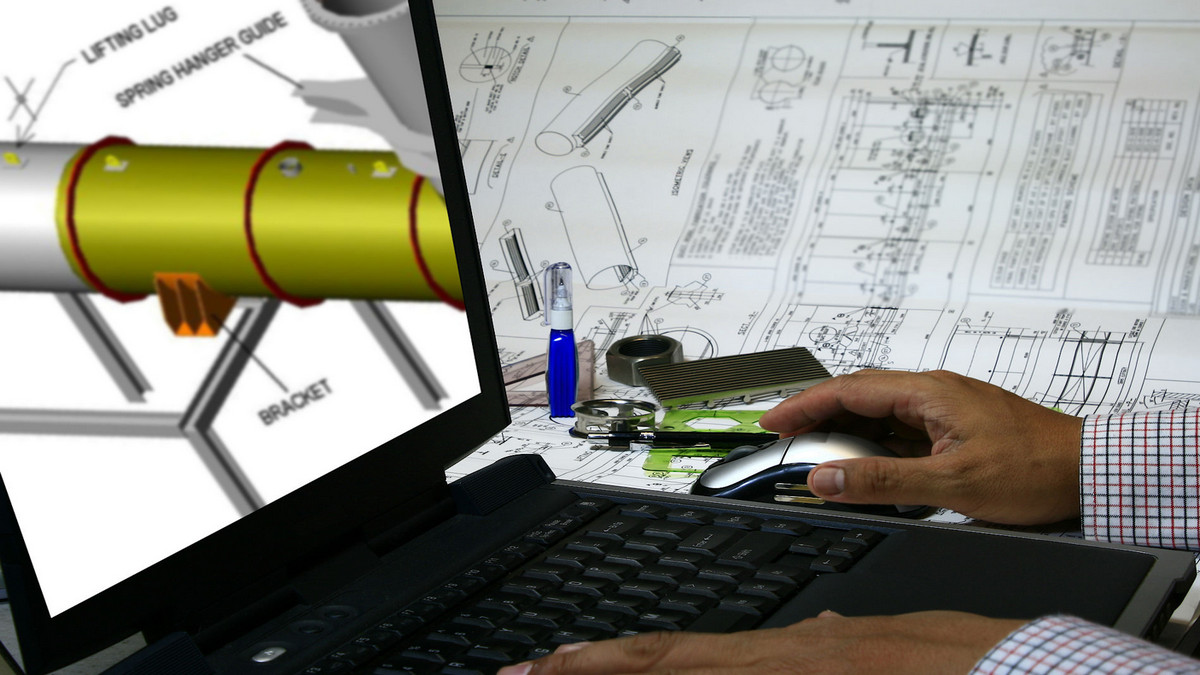The mechanical structure of the main drive system of the CNC machine tool has been greatly simplified, and the belt drive and gear drive have been canceled. Zero drive of the machine.
What is a Spindle Motor?
The spindle motor is also called a high-speed motor, which refers to an AC motor with a rotational speed of more than 10,000 rpm/min. Mainly used in wood, aluminum, stone, hardware, glass, PVC, and other industries. Spindle motors have the advantages of high speed, small size, lightweight, low material consumption, low noise, low vibration, etc., and are increasingly valued and applied by related industries. Because the spindle motor is widely used, coupled with its meticulous workmanship, fast speed, and high processing quality of the motor, other ordinary motors cannot meet the technical requirements of the spindle motor and play an important role in the industrial production process. This technology is used in electric power, missile, aviation, and other industries. Due to the high technical requirements of the industry, high-quality, high-tech, and high-precision spindle motors are required. The motor has large torque, low noise, stable speed, high frequency, speed regulation, small no-load current, slow heating, fast heat dissipation, convenient use, and long life.
The Working Principle of the Electric Spindle:
The phases of the windings of the high-speed electric spindle motor are 120° different from each other. After the three-phase alternating current is applied, the three-phase windings each form a sinusoidal alternating magnetic field. The magnetic field rotates at a constant speed in a certain direction, the magnetic field speed is the synchronous speed of the electric spindle. The synchronous speed n of the asynchronous motor is determined by the frequency f of the input motor stator winding current and the number of pole pairs P of the motor stator (n=60f/p). The electric spindle is to obtain various speeds by transforming the frequency and excitation voltage of the current input to the stator winding of the motor. In the process of acceleration and braking, acceleration and deceleration are performed by changing the frequency to avoid an excessive temperature rise of the motor. Since the direction of the rotating magnetic field of the motor depends on the phase sequence of the three-phase alternating current input to the stator, changing the phase sequence of the input current of the motorized spindle can change the rotation direction of the motorized spindle.
The Related Structure and Function of the Electric Spindle:
The electric spindle is a new technology that integrates the machine tool spindle and the spindle motor in the field of CNC machine tools in recent years. Together with the linear motor technology and high-speed tool technology, it will push high-speed machining into a new era. The electric spindle is a set of components, which includes the electric spindle itself and its accessories: electric spindle, high-frequency frequency conversion device, oil mist lubricator, cooling device, built-in encoder, and tool changer. The electric spindle itself directly mounts the hollow motor rotor on the main shaft, and the stator is fixed in the hole of the main shaft case through the cooling jacket to form a complete shaft unit. After power-on, the rotor directly drives the main shaft to run.
- The technology integrated with the electric spindle is high-speed bearing technology: The electric spindle usually adopts composite ceramic bearings, which are wear-resistant and heat-resistant, and have a service life several times that of traditional bearings. Sometimes electromagnetic suspension bearings or hydrostatic bearings are also used, the inner and outer rings are not in contact, and the theoretical life is infinite.
- High-speed motor technology: The electro-spindle is the product of the fusion of the motor and the main shaft. The rotor of the motor is the rotating part of the main shaft. In theory, the electro-spindle can be regarded as a high-speed motor. The key technology is dynamic balancing at high speeds.
- Lubrication: The lubrication of the electric spindle generally adopts regular quantitative oil and gas lubrication, and grease lubrication can be used, but the corresponding speed will be reduced. The so-called timing is to inject oil every certain time interval. The so-called quantitative is to accurately control the amount of lubricating oil each time through a device called a quantitative valve. Oil-air lubrication means that the lubricating oil is blown into the ceramic bearing under the carry of compressed air. Oil quantity control is important. If it is too small, it will not be able to lubricate. If it is too large, it will heat up due to the resistance of the oil when the bearing rotates at high speed.
- Cooling device: To dissipate heat to the high-speed electric spindle as soon as possible, a circulating coolant is usually passed to the outer wall of the electric spindle. The function of the cooling device is to maintain the temperature of the coolant.
- Built-in pulse encoder: To realize automatic tool change and rigid tapping, the electric spindle has a built-in pulse encoder to achieve accurate phase angle control and coordination with the feed.
- Automatic tool changer: To be applied to the machining center, the electric spindle is equipped with an automatic tool changer, including disc springs, broach cylinders, etc.
- The mounting method of high-speed tools: HSK, SKI, and other high-speed tools are mainly used.
- High-frequency frequency conversion device: To achieve the speed of tens of thousands or even hundreds of thousands of revolutions per minute of the electric spindle. A high-frequency frequency conversion device must be used to drive the built-in high-speed motor of the electric spindle, and the output frequency of the frequency converter must reach thousands or thousands of hertz.
The Difference Between the Servo Motor and Spindle Motor:
- CNC machine tools have different requirements for spindle motors and servo motors:
The requirements for the feed servo motor are:
- Mechanical characteristics: The speed drop and rigidity of the servo motor are required to be small.
- Requirements for fast response: This is more stringent in contour processing, especially for high-speed machining of objects with large curvature.
- Speed regulation range: This can make the CNC machine tool suitable for various tools and processing materials. It is suitable for various processing technologies.
- A certain output torque and a certain overload torque is required: The nature of the machine tool's mechanical load is mainly to overcome the friction of the worktable and the resistance of cutting, so it is the nature of constant torque.
The requirements for high-speed motorized spindles are:
- Sufficient output power, the loaded nature of the spindle of the CNC machine tool is similar to constant power. When the speed of the motorized spindle of the machine tool is high, the output torque is small. When the spindle speed is low, the output torque is large. The shaft drive is required to have the property of constant power.
- Speed regulation range: To ensure that the CNC machine tool is suitable for various tools and processing materials. It is suitable for various processing technologies, and the spindle motor is required to have a certain speed regulation range. But the requirements for the spindle are lower than the feed.
- Speed accuracy: The static difference is generally required to be less than 5%, and the higher requirement is less than 1%.
- Fast: The spindle drive is sometimes used in the positioning function, which requires it to be fast.
- The output indicators of the servo motor and the spindle motor are different:
The Servo motor takes torque (N.m), and the spindle takes power (kW) as the index. The servo motor drives the worktable of the machine tool, and the load damping of the worktable is the torque converted to the motor shaft, so the servo motor takes the torque (N.m) as the index. The spindle motor drives the spindle of the machine tool, and its load must meet the power of the machine tool, so the spindle motor takes the power (kW) as the index. But through the conversion of the mechanical formula, the two indicators can be calculated mutually.














